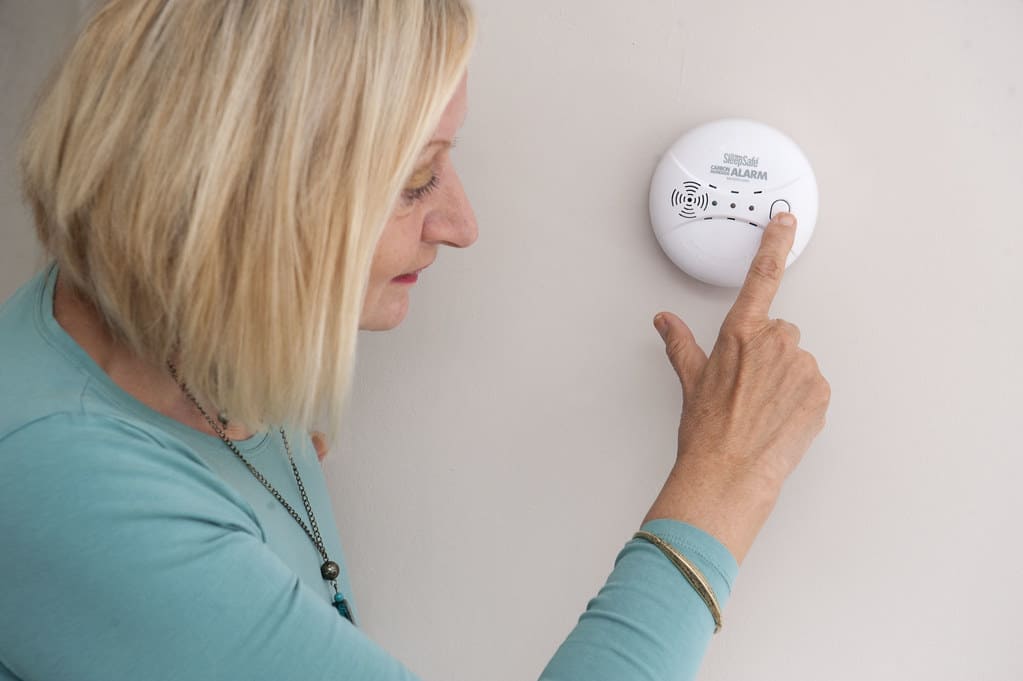Last Updated on April 24, 2020 by Jed Glover
First, we need to know and understand what is Carbon Monoxide (CO). By that, we would understand why the Carbon Monoxide Detector was being invented.
Carbon Monoxide is colorless, odorless, and tasteless gas, but very toxic. How? It combines with the Hemoglobin (the molecule in red blood cells that carries oxygen from the lungs to tissues all over the body) in our blood. Exposure to small concentrations of Carbon Monoxide hinders the ability of Hemoglobin to deliver oxygen to the body. Too much accumulation of this gas in our system could lead to carbon monoxide poisoning. The danger with this is we cannot even tell if we are inhaling it. Thus, it is called ” The Silent Killer “.
That’s so alarming! We’ve got a lot of questions in our minds now. Let’s study this deeper, one by one.
What produces Carbon Monoxide?
It’s a melancholy that most of our appliances, which helps us have an easier and comfortable life, are also putting our lives in danger.
These are our:
- gas/ cooking ranges
- water heaters
- charcoal grills
- space heaters/ central heating systems
- fireplaces
- lawnmowers
- portable generators
- car/ truck engines
By the way, smoking cigarettes is also included. It causes blood levels of Carbon Monoxide to rise.
Who loves to smell the aroma of paints and varnishes here? I do. This will be bad news for us. The solvent usually found in these two – Methylene chloride can break down (metabolize) into carbon monoxide when inhaled. Thus, it can cause Carbon Monoxide poisoning.
Signs & Symptoms of Carbon Monoxide Poisoning
After breathing Carbon Monoxide for a short period of time, these early symptoms are:
- Shortness of breath during mild exertion
- Dizziness
- Dull Headache
- Weakness or fatigue
- Nausea or vomiting
- Confusion
- Blurred vision
- Loss of consciousness
If you are in doubt if you or someone you know is experiencing Carbon Monoxide poisoning, leave the area and breathe fresh air. Go to the Emergency Department right away.
How can we prevent leakage of Carbon Monoxide Gas or CO Poisoning?
Unlike any other gases that you can smell and identify right away, Carbon Monoxide being odorless is what’s making it alarming. Since we already know what produces the said gas, the best thing to do is to prevent it from accumulating.
What we are doing now is the most important prevention we can get – knowing the enemy. Now we know what and how this gas could lead us to something very serious, or even lead us to death.
We should not use cooking or gas ranges to heat a room or the house. Let us also make sure that our home is well ventilated and that vents are not obstructed. Do not use charcoal on an indoor barbecue. We should maintain fireplaces and chimneys at least once a year by a fully-qualified sweep. Never use a generator near the window, door, or vent. Do not leave a gasoline-powered motor running in a garage, for example, motorbikes, cars, or lawnmowers. Open the garage door before starting your car. Ask those who are smoking cigarettes to distance the house while smoking. Smoking does not have any good effect in the first place. Use solvents only outdoors or in well-ventilated areas. Make sure to read the instructions and follow the safety precautions on the label.
Last but not the least, we need to install a Carbon Monoxide Detector. CO Detectors measure CO levels over time and sound an alarm before dangerous levels of CO accumulate in an environment. This will give people adequate warning to ventilate the area or evacuate.
We need to know that smoke detectors are different from CO detectors. But, since the technology is improving every now and then, there are now combined smoke/CO detectors available in the market.
Let’s now go back to the most common question of those who have CO detectors at home:
Why do carbon monoxide detectors go off in the middle of the night?
I’ve done a lot of readings – google and online forums, and watched videos about this specific topic. This is the most common issue that the carbon monoxide detector owners always have. I’ve checked the Guardian Security & Fire website and this is what it says about the carbon monoxide alarm going off. They gave three reasons:
- It is doing its job and detects CO pollution in the air
- It is a false alarm triggered by other household items
- The detector fails to function normally or the batteries need changing
But, why will it go off in the middle of the night usually? It’s the “3 a.m. alarm chirp”. As per the www.kidde.com website, this is because of the battery’s charge level and a home’s air temperature. This serves as a warning to the homeowners that the alarm’s battery nears the end of its life. As this happens, the amount of power it produces causes internal resistance. Any decrease in the room temperature would increase this “resistance”. This would affect the battery’s ability to transport the power needed to operate the device in an alarm situation.
This feature of a battery can cause an alarm to enter the low battery chirp mode when air temperatures lower. That’s the reason why the alarm may sound a low-battery chirp in the middle of the night. Homes would have the lowest temperature between 2 a.m and 6 a.m. It then stops when the home temperature increases a few degrees.
Whatever the reason is for that CO alarm to go off in the middle of the night, we should not take it for granted. Let’s not assume that it’s a simple malfunction, a false alarm, it only needs a battery change, or it’s time to buy and install a new one. What if it’s detecting CO pollution inside our home? The best way to do – IS TO NOT TAKE ANY RISKS.
Go outside and have some fresh air. Turn off all the appliances that are emitting CO. Call for help, call 911. Peace of mind, we deserve this.


